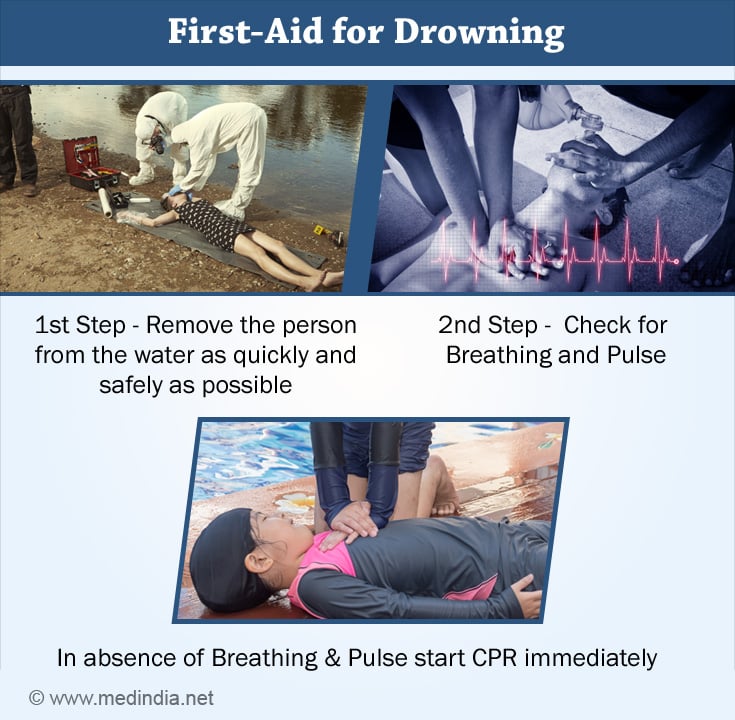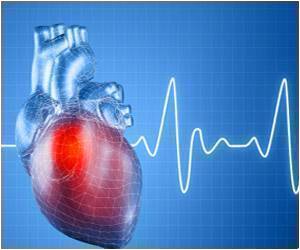- Drowning - (https://www.who.int/news-room/fact-sheets/detail/drowning)
- Investigation of Drowning Deaths: A Practical Review - (https://www.ncbi.nlm.nih.gov/pmc/articles/PMC6474464/)
- Drowning Facts - (https://www.cdc.gov/drowning/facts/index.html)
- Identifying Risk Factors Associated with Fatal Drowning Accidents in the Paediatric Population: A Review of International Evidence - (https://www.ncbi.nlm.nih.gov/pmc/articles/PMC6919957/)
- Place of pathology in the forensic diagnosis of drowning - (https://pubmed.ncbi.nlm.nih.gov/14752383/#:~:text=The%20best%20signs%20of%20drowning,protocol%20to %20avoid%20possible%20contamination)
- Five things to know about drowning - (https://www.redcross.org.uk/stories/health-and-social-care/first-aid/five-things-to-know-about-drowning-in-open-water)
- About Drowning - (https://www.ncbi.nlm.nih.gov/books/NBK430833/)
- What is Drowning? - (https://aci.health.nsw.gov.au/networks/eci/clinical/clinical-tools/environmental-health/submersion)
- Near-Drowning - (https://www.winchesterhospital.org/health-library/article?id=99745)
- Drowning Prevention - (https://www.cdc.gov/drowning/prevention/index.html)
- 10 ways to prevent drowning - (https://www.ucihealth.org/blog/2017/06/prevent-drowning)
- What is CPR? - (https://cpr.heart.org/en/resources/what-is-cpr)
- The experience of drowning - (https://www.ncbi.nlm.nih.gov/pmc/articles/PMC8928428/)
- Fatal water intoxication - (https://www.ncbi.nlm.nih.gov/pmc/articles/PMC1770067/)
- Three Arizona police officers are placed on leave after looking on as a man drowned - (https://www.npr.org/2022/06/07/1103463458/arizona-police-officers-placed-on- leave-after-looking-on-as-man-drowned)
Introduction About Drowning
Drowning happens when the body is fully immersed in any liquid like water. This can lead to suffocation due to the inability to breathe air.
Drowning is the world's third-highest-leading cause of death and unintentional injury. It contributes to 7% of all injury-related deaths. Global estimates suggest that there are 2,36,000 annual drowning deaths.
However, we may underestimate global estimates of drowning as a problem due to the unreliability of non-fatal drowning statistics. Drowning has a big economic impact due to the costs linked to both direct and indirect expenses from drowning incidents(1✔ ✔Trusted Source
Drowning
Go to source).
Civilians with easy access to water bodies are the most vulnerable to drowning. Most drowning deaths occur in low- and middle-income countries, even though drowning is a problem worldwide.
Mechanism of Drowning
Breathing is a reflex that helps us take in oxygen and remove carbon dioxide. We breathe in air that goes into our lungs and exchange oxygen and carbon dioxide in small air sacs.In drowning the lungs gets filled with liquid. This results in shortness of breath. This in turn leads to a lack of oxygen in the body, known as asphyxia. If water stays in the lungs, it might end up in the brain and organs causing lasting harm or death(2✔ ✔Trusted Source
Investigation of Drowning Deaths: A Practical Review
Go to source).
Stages of Drowning
These are the stages of drowning:
- The Struggle to keep the airway clear of the water: When a person submerges in water, they naturally try to keep their head above water to breathe. This causes exhaustion, and panic, leading them to inhale water
- Initial submersion and breath-holding: When someone can't stay above water, they might take a last breath and hold it while underwater.
- Aspiration of water: As the person holds their breath underwater, the oxygen supply in their body starts to deplete, and carbon dioxide builds up. This triggers the body's natural reflex to take a breath, which can cause the person to inhale water instead of air.
- Unconsciousness: As the person inhales more water, they might start losing consciousness. The lack of oxygen in the body can cause brain damage and make the person unable to think or move properly.
- Cardio-Pulmonary arrest: The intake of water can also damage the lungs and cause them to stop functioning, leading to cardiac arrest.
- Death from drowning: Without proper medical attention, the person may not be able to recover leading to death(12✔ ✔Trusted Source
What is CPR?
Go to source).
Drowning can occur fast and silently, and it's not always easy to tell if someone is struggling in the water It's essential to take proper safety precautions when near or in water to prevent drowning.
Types of Drowning
Wet Drowning
In this form of drowning water enters into the lungs completely. It can be of two types:
a) Fresh Water Drowning:
Drowning in freshwater can cause physical changes. Water fills the lungs, reducing oxygen in the blood and causing a lack of oxygen to the heart and brain cells.
Water absorption can also lead to dilution of blood and a decrease in sodium levels. It can also cause the increased breakdown of red blood cells and this results in an increase in potassium levels in the blood. This can lead to death within 2 to 3 minutes.
b) Sea Water Drowning:
Sea water is a hypertonic medium due to its salt content. In the case of saltwater drowning, water enters the lungs leading to reverse absorption. The lungs first pull the salt water from the blood, leading to water-logging of the lungs and causing pulmonary edema. There is also a lack of oxygen exchange leading to cardiac anoxia.
Death occurs within 4 to 5 minutes after drowning in seawater.
Dry Drowning
Water enters the larynx, but a sudden spasm stops it from going into the lungs, this terms dry drowning. Laryngeal spasm is a common cause of death in drowning too.
Secondary Drowning
Generally, death happens as a result of the subsequent consequences of drowning. Commonly noticed after a few hours or days in a resuscitated patient. Mortality may result from any related head trauma or bronchial pneumonia.
Death may also happen if the brain is deprived of oxygen for a prolonged period of time. This can lead to permanent brain damage.
Immersion Syndrome
This occurs when there is sudden contact with the cold water. Jumping into or bathing in cold water can stimulate the large vagus nerve in our body, causing hydrocution. In this case, death occurs as a result of cardiac arrest caused by vagal nerve inhibition.
Near drowning
Individuals experience near drowning when they submerge but survive with or without resuscitation. Even if a person does not drown, near drowning can cause major medical consequences and requires immediate medical intervention.
Risk factors of Drowning
- Lack of barriers: Open water like lakes, pools, and ponds without barriers or lifeguards can be dangerous and increase the chance of drowning.
- Drugs and Alcohol: Alcohol and substance abuse can impair judgment and coordination, leading to accidental drowning.
- Seizures or other medical conditions: People with seizures, heart problems, or other health issues are more likely to drown if they are alone near water(3✔ ✔Trusted Source
Drowning Facts
Go to source). - Water conditions: Larger waves, strong currents, and undertows can make it difficult for even experienced swimmers to swim.
- Lack of swimming skills: People who cannot swim are at higher risk of drowning, especially when they are in deeper water.
- Children: Always watch over children near water, as they might not know how to stay safe(4✔ ✔Trusted Source
Identifying Risk Factors Associated with Fatal Drowning Accidents in the Paediatric Population: A Review of International Evidence
Go to source). - Boating accidents: People can drown in boat accidents if they are not wearing a life vest.
Symptoms and Signs of Drowning
Doctors can make the diagnosis based on the patient's clinical presentation and history. The symptoms depend on the intensity and duration of the episode, the signs and symptoms of drowning may vary. Some of the most common symptoms and signs of a live person drowning include:
- Difficulty Breathing
- Skin color appears pale or bluish
- Confusion
- Disorientation
- Loss of Consciousness
- Abnormal heartbeat
- Nausea, vomiting, abdominal pain
Imaging for Drowning
Chest X-ray and CT scan of chest can be used to evaluate complications such as aspiration, pneumonia and pulmonary edema.
Diagnosis of Drowning in Dead Person
Drowning is a challenging diagnosis. Specific signs of drowning include froth around the mouth and nostrils, as well as lung distension.
Biopsy of the lungs in drowning victims reveals non-specific lesions such as 'emphysema aquosum' and alveolar edema.
What is Diatom test for Drowning?
The diatom test is a commonly used test for drowning and requires a meticulous protocol to avoid contamination. The test involves collecting samples from various tissues including heart, lung, liver, kidney, bone marrow, and brain, during autopsy.
Diatom tests must be conducted in both a qualitative and quantitative manner. The types of diatoms found on the body should match those at the drowning site, and the amounts should be roughly the same. However, its accuracy has been questioned(5✔ ✔Trusted Source
Place of pathology in the forensic diagnosis of drowning
Go to source).
Alcohol or Drug Levels
Drugs and alcohol can be detected in the bloodstream by forensic testing to support the diagnosis.
The diagnosis of drowning can be complex. It is based on the results of several tests. In case of recovery of a dead body from the site of drowning additional tests maybe required to understand the cause of death.
Treatment for Drowning
First-Aid for drowning
- Remove the victim from the water as quickly and safely as possible, Be careful to support the neck and head if there is any concern about a potential spinal injury.
- Examine the victim's Airway, Breathing, and Circulation(ABC). Begin rescue breathing immediately if the person is not breathing or is merely gasping. Begin cardiopulmonary resuscitation (CPR) if there is no pulse(6✔ ✔Trusted Source
Five things to know about drowning
Go to source) - Call the emergency room for medical assistance as soon as possible.
- To avoid choking or aspiration, place the person on their side in the recovery position if they are aware.
- While waiting for medical help, keep the person warm and dry.
- If the victim regains consciousness, provide reassurance and monitor their condition closely.
- Take them to a nearby hospital as soon as possible.
How to do Resuscitation (CPR) on a Drowning Person?
- Check the person's responsiveness.
- Position the person on their back and open their airway by tilting their head back and lifting their chin.
- Check for breathing.
- If the person is not breathing or only gasping, begin chest compressions.
- Method: Place the palm of your hand at the center of the person's chest, precisely between the nipples. And then place your second hand on top of the first one. Start performing 100 to 120 chest compressions each minute. Your hands should descend around 2 inches (5 cm).
- Provide rescue breaths if you have CPR training and feel comfortable doing so. Following each round of 30 compressions, tilt the person's head back and lift their chin. Then pinch their nostrils to close and give two breaths, each lasting about one second.
- Continue to alternate between chest compressions and rescue breaths. Stop if the person begins to breathe on their own(12✔ ✔Trusted Source
What is CPR?
Go to source).

Hospitalized Treatment
- To begin, measure blood oxygen levels and administer the required amount of oxygen. Medical personnel can administer supplemental oxygen. You can utilize a nasal cannula, non-rebreather mask, non-invasive positive pressure ventilation, or endotracheal tube.
- The goal is to regulate oxygen saturation level to 92% - 96% and prevent over-oxygenation. In the event of bronchospasm, one can administer nebulized albuterol.
- You should also provide adequate cardiac support like advanced support for the function of the heart. These support systems are called 'Advanced Cardiac Life Support (ACLS).'
- In cases with persistently low blood pressure, intravenous fluids and, in certain cases, vasopressors may be used(7✔ ✔Trusted Source
About Drowning
Go to source). - There is no evidence to support the use of prophylactic antibiotics. Except with drowning cases in sewage(8✔ ✔Trusted Source
What is Drowning?
Go to source). - Warming treatments are crucial for individuals exposed to cold water, as hypothermia can quickly set in. This might lead to serious health consequences, including death(9✔ ✔Trusted Source
Near-Drowning
Go to source).
Preventing Drowning: Essential Tips and Life-Saving Techniques
- Avoid Alcohol: Drinking alcohol before or during swimming, boating, or other water sports should be avoided. Alcohol hinders decision-making, balance, and coordination.
- Check Local Conditions: Hidden dangers in lakes, rivers, and seas include hazardous currents or waves, rocks or plants, and poor visibility. Check the weather before engaging in any water activity. Rapid changes in the local weather can result in hazardous flash floods, powerful winds, and thunderstorms with lightning strikes.
- Lifejackets: ●Wear life jackets during boating and other water activity games.

- Swimming: Swim lessons and water safety measures from a trusted source is helpful.
- Supervision: Supervise children when they are playing in the water. Authorities should place lifeguards around beaches and pools.
- Fence the Pool Area: If you have a pool, be sure to fence it and shut the gate while the pool is not in use. This can make the pool out of reach for children(10✔ ✔Trusted Source
Drowning Prevention
Go to source). - Learn Basic Life Support Skills: Everyone should learn how to give cardiopulmonary resuscitation (CPR) in case of emergency situations to safeguard from life-threatening incidents(11✔ ✔Trusted Source
10 ways to prevent drowning
Go to source).














